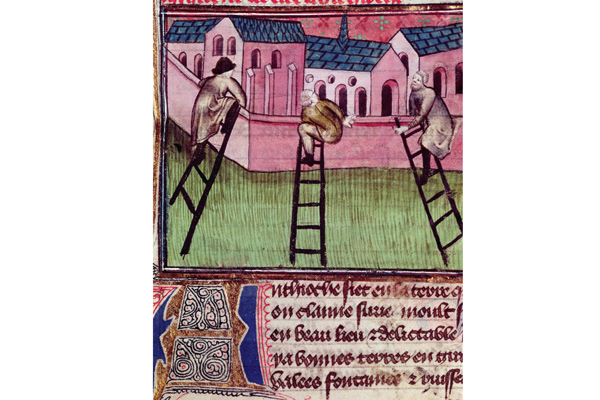Perhaps more than any other single historical event, the First Crusade (1096-99) lends itself to the narrative technique. This was the quest — and a successful one — on the part of Roman Catholic Europe to regain the Holy Lands taken during the Muslim conquests of the Levant four centuries earlier. Its rich cast of characters — among them Bohemond of Taranto, Raymond of Toulouse and Godfrey of Bouillon — caught between conflicting motives of faith, avarice, loyalty and ambition, have inspired magnificent epic poetry. Their ultimate goal was the recovery of Jerusalem — and as Sir Ronald Storrs, British Governor during the Mandate once said, ‘There can be no promotion after Jerusalem.’
Where that quest began, however, is more vexing. The received view has generally been at the Council of Clermont in November 1095, where a large audience of European nobility and clergy were supposedly galvanised by the rhetoric of Pope Urban II to go to the aid of the Byzantine Emperor Alexios I Komnenos aganst the Seljuq Turks invading Anatolia.
But Peter Frankopan — whose book is revealingly subtitled ‘The Call from the East’ — prefers to see its true origin in Constantinople. Rather than allowing the Pope or the crusader leaders to take centre stage, Frankopan focuses on Alexios, whom he regards as an unjustly neglected figure, vulnerable as much to internal strife within his empire as to invasion from without: ‘For nearly ten centuries, Alexios has remained on the periphery.’
But this has not in fact been the case, and one senses an over-enthusiastic publisher pushing the ‘novelty’ of a certain line too hard. The most attractively written account of the First Crusade is still Steven Runciman’s. Though many scholars would agree that Runciman needs updating, none would accuse him of having neglected the Byzantine angle. At the beginning of his history, Runciman allows Alexios more coverage than even Frankopan does, while Urban makes his first appearance several chapters in. And Frankopan actually provides some background on Urban which Runciman omits, giving a concise picture of the Pope’s fragile political status, threatened by the German emperor.
Sadly, Frankopan’s prosaic style too often lets him down. ‘Alexios knew how to pull the triggers of western Christians.’ How? By the ‘high-profile channelling of significant relics’. Fortunately, from his wide reading, he can draw on some wonderfully vivid passages, and he has a knack for unearthing new material. An obscure Jewish witness is unexpectedly cited in support of the crusaders, while a minor
Greek general’s victory letter to his emperor is revealed after languishing for 1,000 years in the dark. But the most important primary Byzantine source must still be the Alexiad — that unreliable semi-hagiography of Alexios written by his daughter, Anna Komnene. Having edited this work, Frankopan is well qualified to deconstruct it. But while he casts doubt on its reliabilty, he has almost no other evidence for his crucial chapter on internal strife in Byzantium. In the end, he needs Anna too much to resist her sinuous appeal.
I hope it is not because I myself am writing a life of Steven Runciman that I feel Frankopan should have listed the History of the Crusades in his bibliography. He differs frequently from his venerable precursor, and a calculated engagement with Runciman would have lent this First Crusade more authority than its publisher’s hype might suggest.





Comments